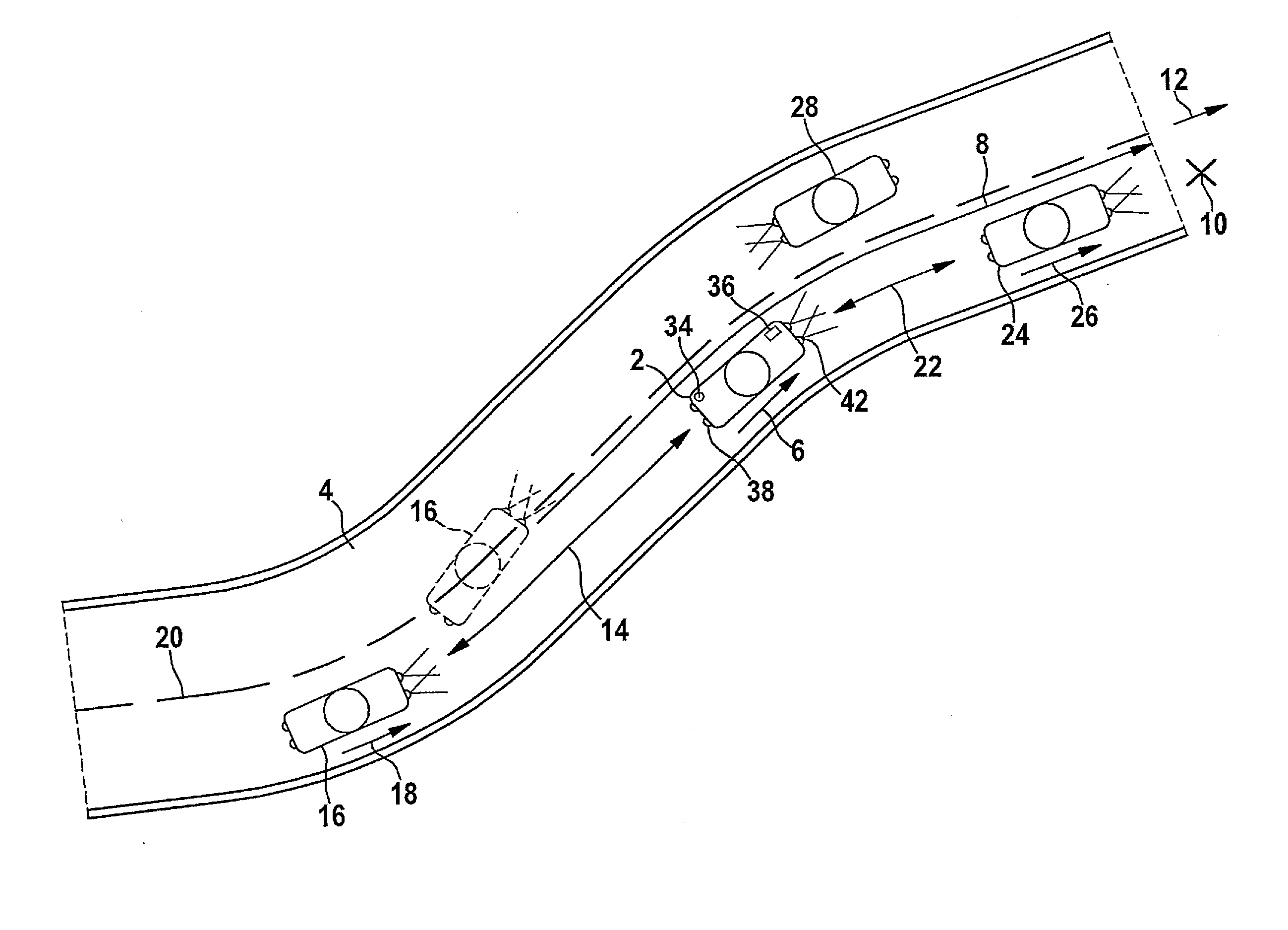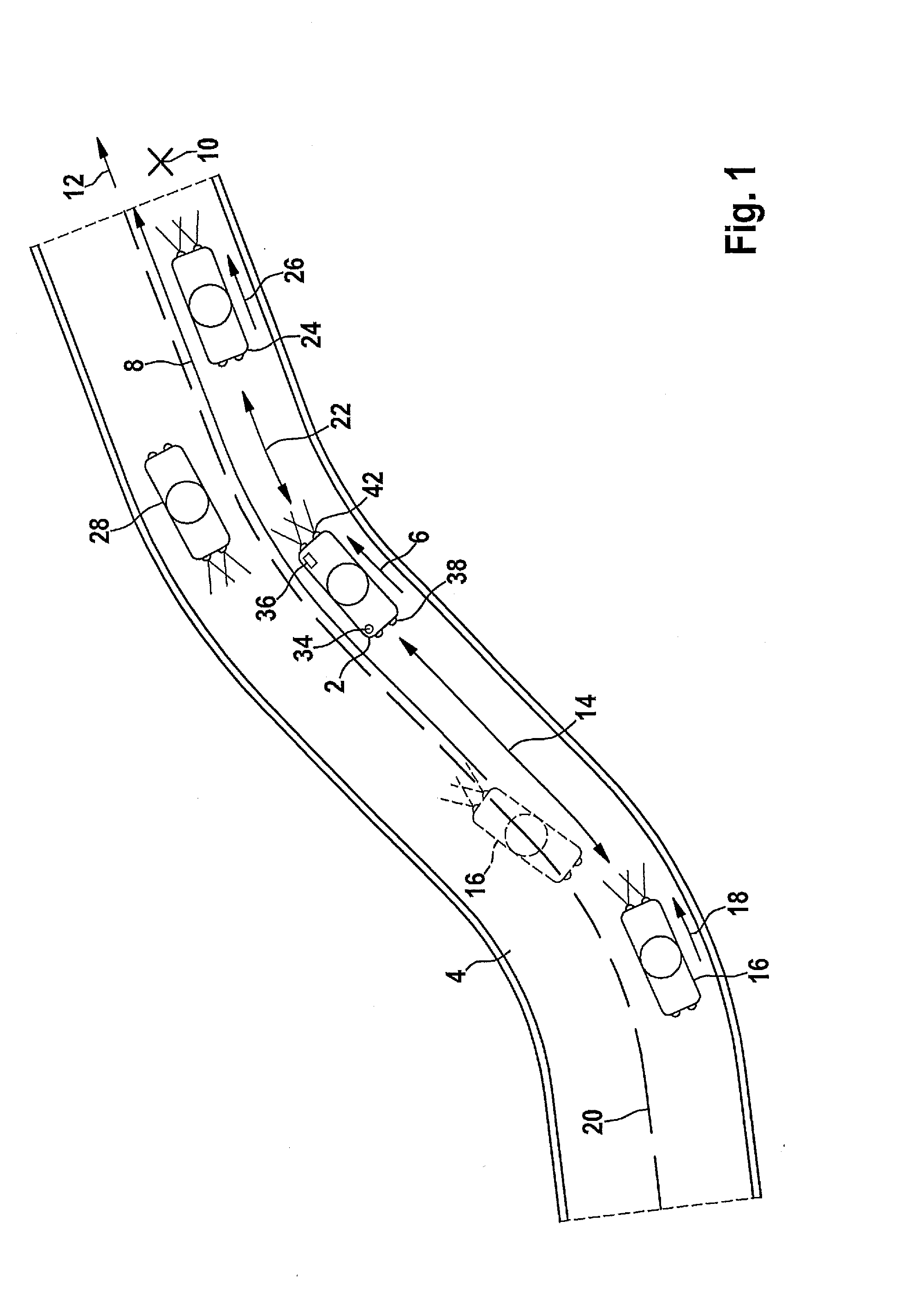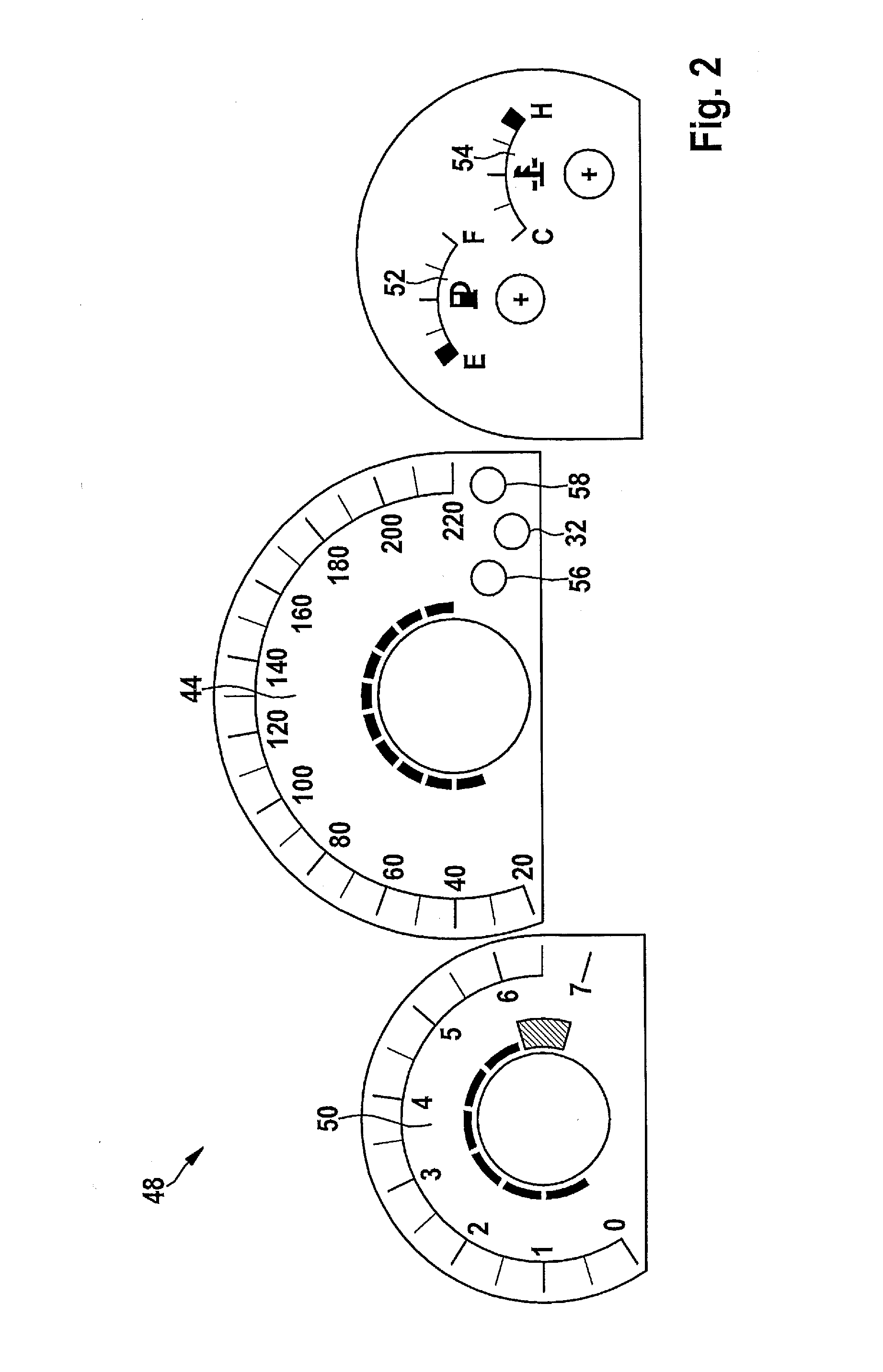Method for operating a vehicle during coasting
a technology for coasting and vehicles, applied in the field of vehicles, can solve the problems of affecting the driver being afraid to use the coasting assistant, and the tailgate feeling, so as to achieve the effect of increasing the speed of the vehicle on the coasting rou
- Summary
- Abstract
- Description
- Claims
- Application Information
AI Technical Summary
Benefits of technology
Problems solved by technology
Method used
Image
Examples
Embodiment Construction
[0035]In the figures, the same elements are provided with the same reference numerals and are described only once.
[0036]Reference is made to FIG. 1, which provides a schematic view of a first vehicle 2 on a road 4.
[0037]First vehicle 2 is moving on road 4 at an actual speed 6 in a travel direction corresponding to actual speed 6. In this context, first vehicle 2 is moving on a coasting route 8. On coasting route 8, first vehicle 2 is not to be supplied with any kind of energy, for instance by an internal combustion engine or an electric motor, so that first vehicle 2 coasts, and is slowed down, at a position 10 in the travel direction before first vehicle 2, to a setpoint speed 12.
[0038]As seen in the travel direction of first vehicle 2, at a first distance 14 behind first vehicle 2, there is a second vehicle 16, which is moving forward at a corresponding speed 18. In the present embodiment, a planned passing process of second vehicle 16 is characterized in that a version of second ...
PUM
 Login to View More
Login to View More Abstract
Description
Claims
Application Information
 Login to View More
Login to View More - R&D
- Intellectual Property
- Life Sciences
- Materials
- Tech Scout
- Unparalleled Data Quality
- Higher Quality Content
- 60% Fewer Hallucinations
Browse by: Latest US Patents, China's latest patents, Technical Efficacy Thesaurus, Application Domain, Technology Topic, Popular Technical Reports.
© 2025 PatSnap. All rights reserved.Legal|Privacy policy|Modern Slavery Act Transparency Statement|Sitemap|About US| Contact US: help@patsnap.com



